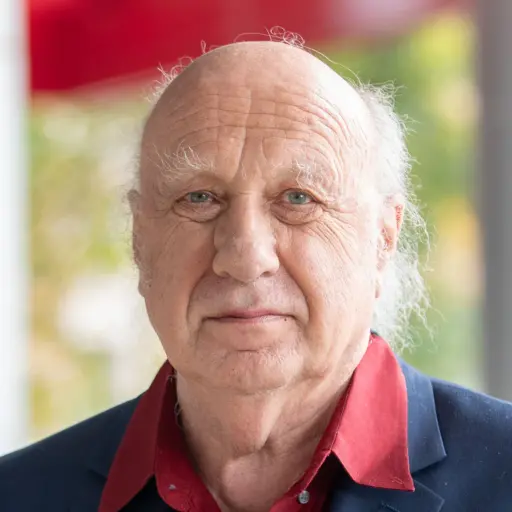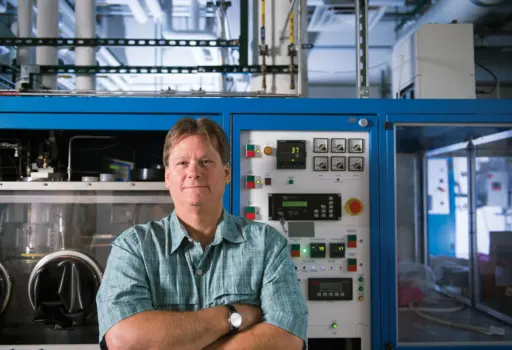Imagine a sensor that detects trace amounts of dangerous chemicals or explosives from afar—something that could “sniff out” a bomb or poison gas from hundreds of yards away.
Such advanced sensors require high-powered lasers. And the future looks bright, as engineers at the University of Wisconsin-Madison have developed some of the world’s most efficient technology for high-powered devices called quantum cascade lasers.
“The future, when this becomes practical, is that you can sense everything, you can detect everything,” says Dan Botez, a professor of electrical and computer engineering at UW-Madison.
 Dan Botez
Dan Botez
Quantum cascade lasers could point the way to advanced sensors because they emit beams of light at wavelengths for which light is not absorbed in the atmosphere. That range, which is called the mid-infrared, also happens to be the signature spectrum for many common explosives and toxic chemicals. In contrast, the diode lasers found in DVD players or supermarket scanners cannot operate in the mid-infrared range.
The main difference between quantum cascade lasers and diode lasers is the nature of the light-emitting material that forms the basis for each their beams.
Diode lasers usually consist of stacks of material made from between five and 10 relatively thick layers. When current flows through the stack, the material’s electrons become excited and they “jump” up to a higher-energy region, or band. When those electrons fall back down into the band from whence they came, the material emits light. Because the jump between energy bands is relatively large, diode lasers give off higher-energy, shorter wavelength light.
Quantum cascade lasers are capable of emitting longer wavelength mid-infrared light because their composition allows electrons to transition between more narrowly separated discrete energy levels within a band. That’s because quantum cascade lasers are made up of hundreds of very thin layers.
However, today’s quantum cascade lasers have relatively low-powered beams—limiting their usefulness for long-range sensing. And with all those layers, another downside is low overall device efficiency; current technologies convert, at most, 10 to 20 percent of the electricity that they receive into light.
 Luke Mawst
Luke Mawst
That low efficiency is a big problem, because most of the electricity not converted into light becomes heat, which must be removed, adding bulk and cost to devices. What’s more, excess heat limits the useful lifetime of lasers, “frying” their components from the inside out.
To address these issues, the UW-Madison researchers, including Electrical and Computer Engineering Professor Luke Mawst, took advantage of a materials growth technique called metal organic chemical vapor deposition, which allowed them to lay down very thin layers while engineering precisely designed wells and barriers into strategic locations along the stack. The method also allowed them to vary the composition of each layer at will.
“We have unique facilities for fabrication, expertise in device design, and we can take advantage of UW-Madison’s strength in materials characterization,” says Mawst. “We have the complete toolset we need to push these things to the performance limit.”
That toolset allowed them to achieve a record-breaking 86-percent internal efficiency of converting electrons to photons. This will allow them to soon reach electricity-to-light efficiency in excess of 40 percent.
“At first people didn’t believe it was possible,” says Botez. “With these advanced structures, where you can vary every layer, you can get close to the maximum possible internal efficiency.”
The researchers are currently working on strategies to improve the beam quality for the lasers. They have licensed the technology through their spinoff company, Intraband LLC.
Dan Botez is Philip Dunham Reed Professor of Electrical and Computer Engineering at UW-Madison. Other collaborators on the project include scientists at Intraband LLC and Yuri V. Flores at the Massachusetts Institute of Technology Research Laboratory of Electronics. The research was supported by the United States Army (W911NF-12-C-0033), the U.S. Air Force Research Laboratory (FA8650-13-2-1616) and the U.S. Navy (N68335-17-C-0466).